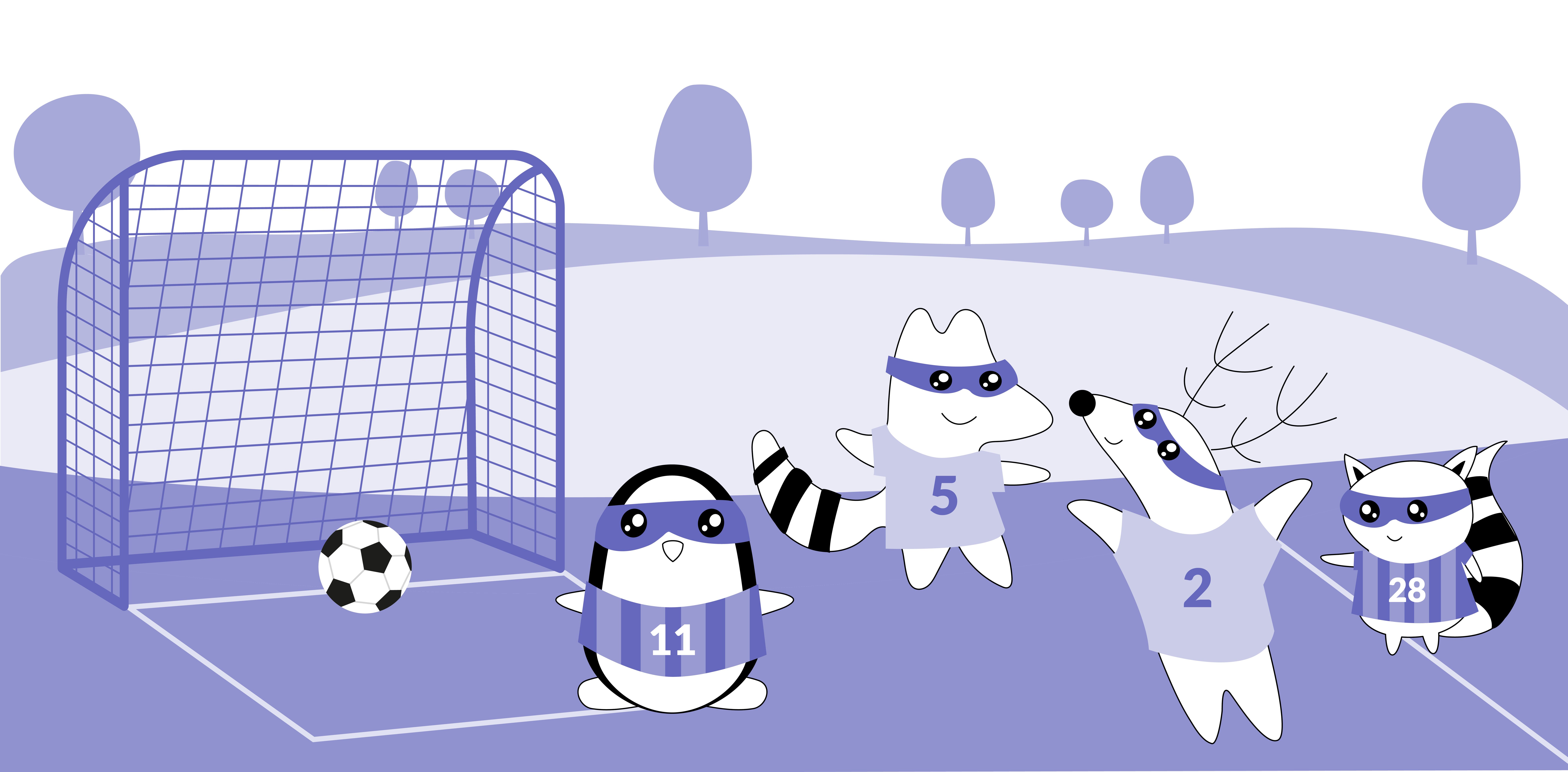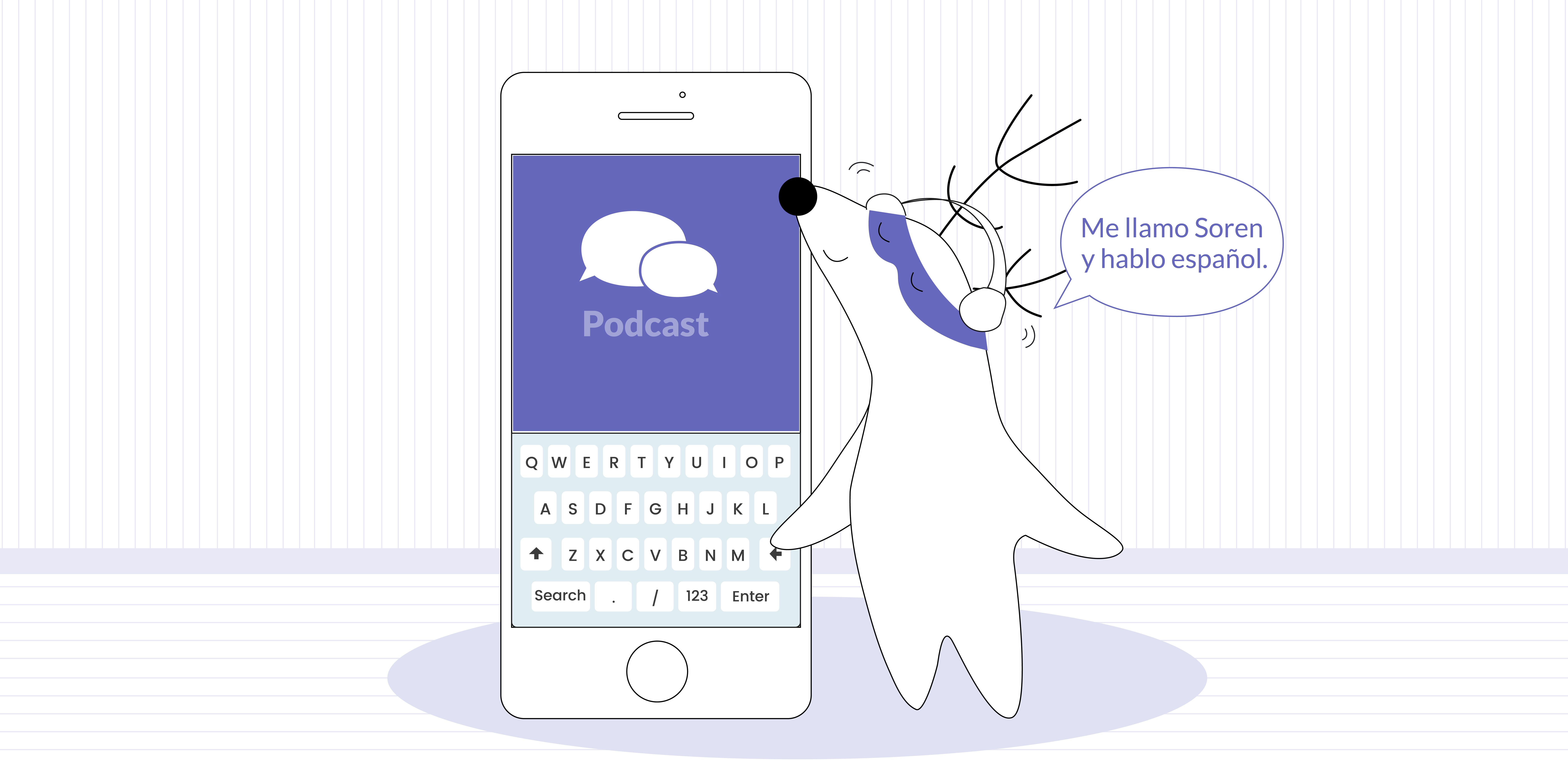
Let's kick off our journey into the magical world of Spanish with a tense that will transport you back in time, making the past come alive! Say “hello” to el pretérito imperfecto, the imperfect tense, where the past isn't just a memory but a vivid story waiting to be told.
Picture yourself as a child, running on a soccer field with your amigos, and imagine how this tense paints a vibrant picture of those moments.
If you'd like to be able to use regular verbs (and irregular, too!) to tell stories in Spanish, dive in with us as we explore how the imperfect tense Spanish captures the essence of ongoing actions and endless childhood adventures!
Learn Spanish with Langster
Formation and Conjugation Rules
The formation of the Spanish imperfect tense is relatively straightforward. For regular imperfect endings, the stem is the infinitive minus the -ar, -er, or -ir ending, and the endings are as follows, without irregular imperfect conjugations:
- For -AR verbs: -aba, -abas, -aba, -ábamos, -abais, -aban
- For -ER and -IR verbs: -ía, -ías, -ía, -íamos, -íais, -ían
Let's take the verb hablar (to talk) as an example and see the appropriate endings:
| Spanish | English |
|---|---|
| Yo hablaba | I was talking |
| Tú hablabas | You were talking |
| Él/Ella/Usted hablaba | He/She/You(formal) were talking |
| Nosotros hablábamos | We were talking |
| Vosotros hablabais | You all were talking |
| Ellos/Ellas/Ustedes hablaban | They/You all were talking |
| Spanish | English |
|---|---|
| Yo hablaba | I was talking |
| Tú hablabas | You were talking |
| Él/Ella/Usted hablaba | He/She/You(formal) were talking |
| Nosotros hablábamos | We were talking |
| Vosotros hablabais | You all were talking |
| Ellos/Ellas/Ustedes hablaban | They/You all were talking |
Irregular Imperfect Conjugations
The imperfect tense in Spanish does have some irregular verbs. While the majority follow regular patterns for conjugation in the imperfect tense, a few verbs have unique forms. These irregularities typically affect the stem of the verb, resulting in changes when you conjugate verbs for certain subject pronouns.
We'll only mention three common irregular verbs here, but there are others.
Verb Ser:
| Spanish | English |
|---|---|
| Ser | to be |
| Yo era | I was |
| Tú eras | You were |
| Él/ella/usted era | He/she/you (formal) were |
| Nosotros/as éramos | We were |
| Vosotros/as erais | You all were |
| Ellos/ellas/ustedes eran | They/you all were |
| Spanish | English |
|---|---|
| Ser | to be |
| Yo era | I was |
| Tú eras | You were |
| Él/ella/usted era | He/she/you (formal) were |
| Nosotros/as éramos | We were |
| Vosotros/as erais | You all were |
| Ellos/ellas/ustedes eran | They/you all were |
Verb Ir:
| Spanish | English |
|---|---|
| Ir | to go |
| Yo iba | I used to go |
| Tú ibas | You used to go |
| Él/ella/usted iba | He/she/you (formal) used to go |
| Nosotros/as íbamos | We used to go |
| Vosotros/as ibais | You all used to go |
| Ellos/ellas/ustedes iban | They/you all used to go |
| Spanish | English |
|---|---|
| Ir | to go |
| Yo iba | I used to go |
| Tú ibas | You used to go |
| Él/ella/usted iba | He/she/you (formal) used to go |
| Nosotros/as íbamos | We used to go |
| Vosotros/as ibais | You all used to go |
| Ellos/ellas/ustedes iban | They/you all used to go |
Verb Saber:
| Spanish | English |
|---|---|
| Yo sabía | I knew |
| Tú sabías | You knew |
| Él/ella/usted sabía | He/she/you (formal) knew |
| Nosotros/as sabíamos | We knew |
| Vosotros/as sabíais | You all knew |
| Ellos/ellas/ustedes sabían | They/you all knew |
| Spanish | English |
|---|---|
| Yo sabía | I knew |
| Tú sabías | You knew |
| Él/ella/usted sabía | He/she/you (formal) knew |
| Nosotros/as sabíamos | We knew |
| Vosotros/as sabíais | You all knew |
| Ellos/ellas/ustedes sabían | They/you all knew |
Usage
Spanish speakers use the imperfect tense to describe repeated, habitual, or continuous past actions. It's also used to provide background information or to describe the state of things or people in the past.

Repeated or Habitual Past Actions
The imperfect tense is used to describe routines or habits that took place in the past. Imagine the things you used to do day in and day out — theimperfect tense is your companion for describing them. It paints a picture of actions that you used to do on a reliable basis.
Spanish
English
Cuando era pequeño, siempre iba al parque después de la escuela.
When I was little, I always went to the park after school.
Descriptive Past Actions
The imperfect also includes descriptions of people, things, or situations in the past. Sometimes, you want to set the stage with vivid descriptions of the past – the people, things, or situations that defined that time.
The imperfect tense will help you add detail and color to your canvas of memory.
Spanish
English
Era un día soleado.
It was a sunny day.
Background Information
The imperfect tense isn't just a standalone star; it's often the supporting actor that provides context for another action. It's like the backdrop that enhances the main scene.
Spanish
English
Estudiaba cuando sonó el teléfono.
I was studying when the phone rang.
Past Actions Without a Definite End
These are actions that were ongoing in the past. Some stories from the past don't have a clear ending. The imperfect tense captures this sense of continuity, of habitual actions in the past.
Spanish
English
Vivía en España.
I used to live in Spain.
Comparison With Other Past Tenses

As we delve deeper into the enchanting world of the imperfect tense, it's essential to understand how it is used in contrast with other past tenses, such as the preterite and the present perfect.
Imperfect vs. Simple Past
The simple past tense is used for actions in the past that are seen as completed. The key difference between the two tenses lies in the nature of the past actions they describe.
While the preterite focuses on actions that have a definite beginning and end, the imperfect describes actions without a clear or specified completion.
For instance, consider the sentence:
Spanish
English
Ayer trabajé todo el día.
Yesterday, I worked all day.
vs.
Spanish
English
Ayer trabajaba todo el día.
Yesterday, I was working all day.
The first sentence, in the preterite, implies that the work is completed, while the second sentence, in the imperfect, suggests an ongoing action without a clear end point.
Imperfect vs. Present Perfect

The present perfect tense describes actions that happened at an unspecified time before now or actions that started in the past and continue to the present.
The imperfect tense, on the other hand, is used for actions in the past that were ongoing or repeated.
For example:
Spanish
English
He leído el libro.
I have read the book
Leía el libro.
I was reading the book
The first sentence, in the present perfect, implies that the action of reading the book was completed at some unspecified time in the past. The second sentence, in the imperfect, suggests an ongoing action in the past.
Conclusion

Incorporating the imperfect tense into your Spanish language repertoire is not only a versatile and essential skill but also a gateway to vividly expressing past experiences. With Langster, our language learning app, you can seamlessly unravel the intricacies of the imperfect tense through engaging real-life stories and interactive exercises when working with past events.
This immersive approach ensures that you not only grasp the formation and usage of this vital component but also discover how it distinguishes itself from other past tenses. Join us on a journey to master the art of Spanish past tense conjugation, and let Langster be your companion in this linguistic adventure.
Learn Spanish with Langster









